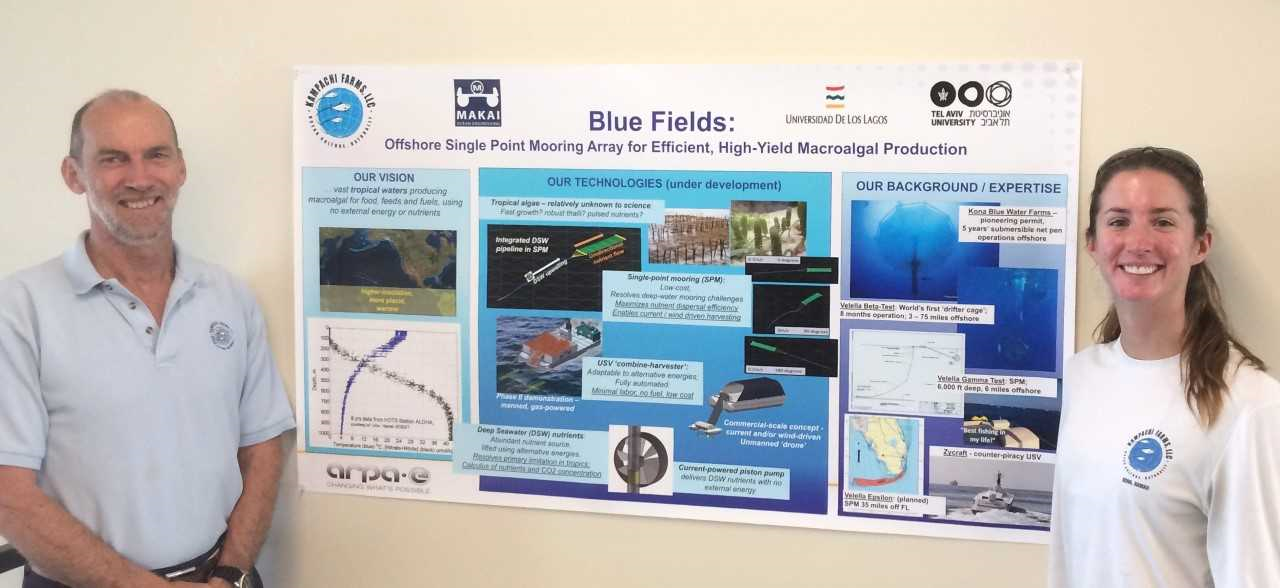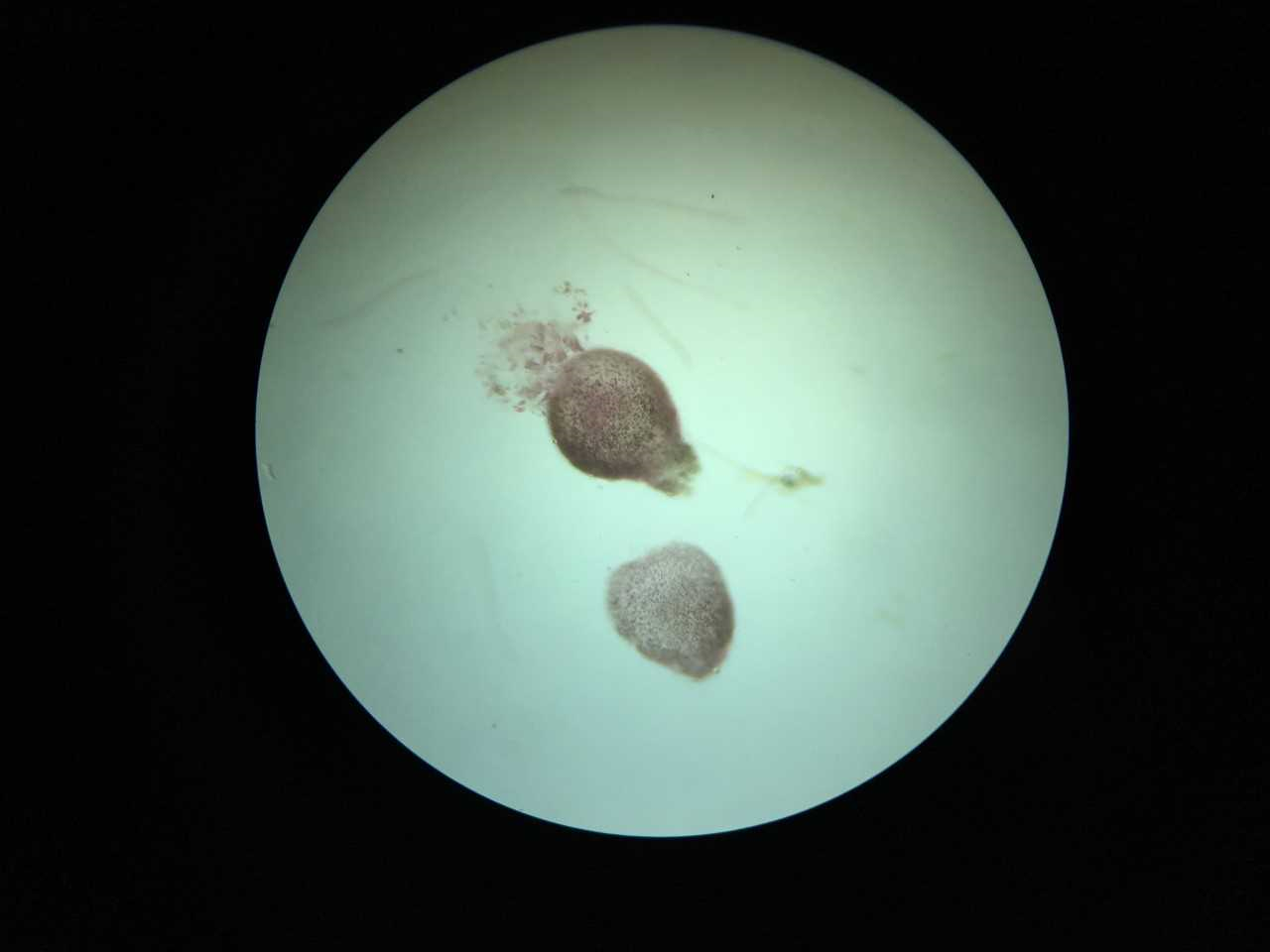Macroalgae, or seaweeds, have been around for a very, very long time; fossil evidence of a red macroalga has been dated between 1 and 1.6 billion years ago (1). Seaweeds must be doing well for themselves, if they’ve survived this long! It’s this realization that has catalyzed phycological research ranging from nutrition, skin care, pharmaceuticals, and more recently, in aquaculture, alternative fuel sources, and carbon sequestration strategies (2-6). Seaweed is even being experimented with as an alternative to plastic packaging (7). Macroalgae have been overlooked by most of the world for far too long, but all of this is now changing, and rapidly. Although seaweed is not a new research topic, significant efforts and investments are being made to further explore its potential.
Before all of this, though, seaweed has been a consistent source of food. The farming of macroalgae is thought to have originated in Japan between the 17th and 19th centuries (8); harnessing the value of seaweed mariculture with no need for using arable land, freshwater, or artificial nutrients, all while introducing a way to help absorb excess nutrients or carbon from the ocean.
Seaweed farming at Nusa Lembongan, Bali. © Jean-Marie Hullot
Macroalgae mariculture is a huge commercial operation in Southeast Asian countries like Japan, China, Korea, and the Philippines. The west is slowly catching on. In Hawaiʻi, seaweed has been utilized for hundreds of years. We have over 500 species of seaweeds here in the islands, and our edible macroalgae, or limu, are savored in local cuisine. As the most remote archipelago in the world, there is a lot of ocean to go around—and this ocean is deep. On the west side of the Big Island (Hawaiʻi Island), the water depth plummets to 6,000 ft. (1,829 m), a mere three miles (4.8 km) offshore. West Hawaiʻi’s Natural Energy Lab of Hawaiʻi Authority (NELHA) supplies a consistent source of seawater pumped from two locations: surface seawater (SSW) from 69 ft. (21 m) and deep sea water (DSW) from 2,211 ft. (674 m). With a broad selection of native algal species, access to NELHA’s DSW and SSW on tap, Hawaiʻi is an ideal location to research mariculture opportunities. Our Blue Fields Project is designed to do just that. Funded by the Department of Energy’s MARINER Program (Macroalgae Research Inspiring Novel Energy Resources), the Blue Fields project proposes to test a single-point mooring array for high-yield macroalgae culture (9).
The two major challenges for offshore macroalgae culture in Hawaiʻi are species selection and offshore nutrient delivery. Very little research has been done into the culture of Hawaiʻi’s native species, and as a result there is limited knowledge of their growth requirements. There are demonstrable (and demonstrated) risks with introducing non-native algal species, which may compete with native ones (10). We will therefore only be using native species in our growth trials. Tropical surface waters are also nutrient poor, which explains their clear blue color. However, Hawaiʻi’s bathymetry (the steep offshore slope of the islands) means that nutrient rich DSW is readily available, and we plan on testing this as a means to stimulate macroalgae growth.



Before the Blue Fields offshore array becomes a reality, a series of land-based trials at our Kona research facility will establish which species may be best to grow, and what they need to thrive. In the coming months we will grow our limu with various mixes of deep seawater and surface seawater, and with different timed pulses of nutrients to determine the needs for scalable production. Our partners at Makai Ocean Engineering, are designing a wave-driven upwelling system to lift DSW nutrients to the offshore array. Once we have selected our target species, the team will finalize designs for a pilot-scale single-point mooring, long-line macroalgae array that harnesses wave, current and wind energy for nutrient delivery and harvesting. We also envisage testing a human-operated prototype algal harvester, with the long-term goal of it being a fully autonomous, reliable, high-yield cutting mechanism (think underwater ROV lawn mower). Through a competitive selection process, Blue Fields may eventually be deployed as a demonstration system offshore in West Hawaiʻi. The resulting biomass will be available for human consumption, as a source for feedstuffs for fish (see our nenue blog) or for cattle, and as material for testing as biofuels.
Seeded lines of Ulva.
We’re only just at the beginning. There’s a lot of work to be done and there is so much that’s still the subject of lively discussion. But that’s what research is about: asking, “What if?”. There is no single answer to all of our environmental challenges. However, seaweed offers a lot of potential to be a key player as we look for ways to feed humanity, mitigate ocean acidification and nutrient ‘dead zones’, and move towards alternative fuel sources.
Learn more about Research at Kampachi Farms.
References:
Bengston, S., Sallstedt, S., Whitehouse, M. (2017) Three-dimensional preservation of cellular and subcellular structures suggests 1.6 billion-year-old crown-group red algae. PLoS Biol., 15(3): e2000735. Available at: http://journals.plos.org/plosbiology/article?id=10.1371/journal.pbio.2000735 [Accessed June 18].
Shannon, E., Abu-Ghannam, N. (2016) Antibacterial derivatives of marine algae: an overview of pharmacological mechanisms and applications. Mar. Drugs., 14(81): doi: 10.3390/md14040081.Available at: https://arrow.dit.ie/cgi/viewcontent.cgi?article=1237&context=schfsehart [Accessed June 18].
Mohamed, S., Hasim, S.N., Rahman, H.A. (2012) Seaweeds: a sustainable functional food for complementary and alternative therapy. Trends Food Sci. Technol. 23(2), pp. 83–96.
The use of algae in fish feeds as alternatives to fishmeal (2013) The fish site [online] Available at: https://thefishsite.com/articles/the-use-of-algae-in-fish-feeds-as-alternatives-to-fishmeal [Accessed June 2018].
Bach, Q., Sillero M. S., Tran, K., Skjermo, J. (2014) Fast hydrothermal liquefaction of a Norwegian macro-alga: screening tests. Algal Res. 6(Part B), pp. 271-276.
How growing sea plants can help slow ocean acidification (2016) Yale Environment 360 [online] Available at: https://e360.yale.edu/features/kelp_seagrass_slow_ocean_acidification_netarts [Accessed June 2018].
Eco-friendly packaging concept made from seaweed wins Lexus Design Award 2016 (2016) De Zeen [online] Available at: https://www.dezeen.com/2016/04/19/eco-friendly-packaging-concept-agar-plasticity-seaweed-wins-lexus-design-award-milan-deisgn-week/ [Accessed June 2018].
Chopin, T., Sawhney, M. (2009) Seaweeds and their mariculture. Encyclopedia of Ocean Sciences (2nd Ed. ), pp. 317-326.
Single point mooring array for macroalgae (2018) ARPA-E Department of Energy [online] Available at: https://arpa-e.energy.gov/?q=slick-sheet-project/single-point-mooring-array-macroalgae [Accessed June 2018].
Huisman, J.M., Abbott, I.A., Smith, C.M. (2007) Hawaiian Reef Plants. University of Hawaiʻi Sea Grant College Program: Honolulu, HI.




